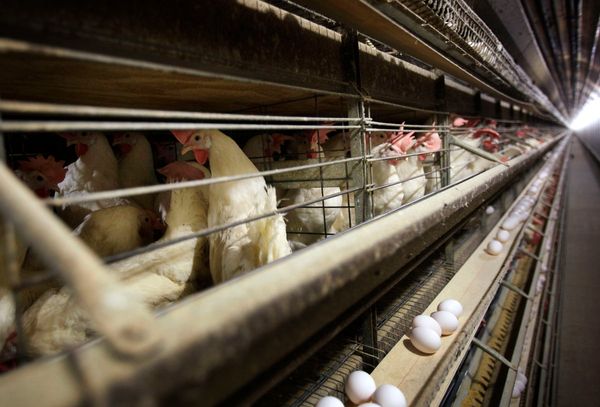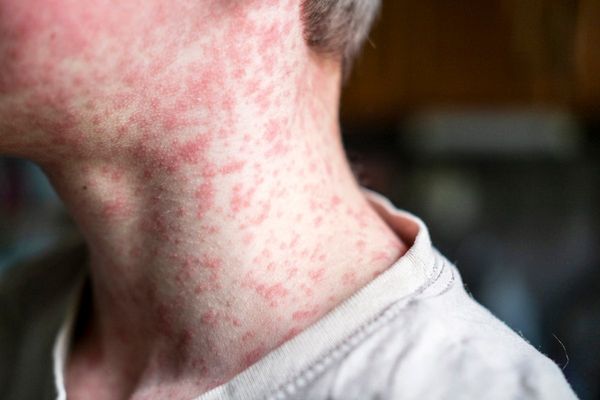Australian scientists trying to work out why bats do not succumb to the dangerous bugs they carry can now predict an outbreak of the deadly Hendra virus well before it may occur.
They have identified lost bat habitats, droughts and a lack of flowering plants as key indicators of potential Hendra outbreaks.
In 1994, the zoonotic virus swept through racing stables in Hendra, an inner city suburb of Brisbane, killing a trainer and 13 horses.
With 66 known outbreaks to date — 42 of those in Queensland and 24 in New South Wales — four people and 108 horses have died.
Scientists have noticed a correlation between Hendra outbreaks and loss of bat habitats.
Wildlife ecologist Peggy Eby has been studying flying foxes, a variety of bat, for the last thirty years.
She said scientists could now identify an area down to the size of a horse paddock where transmission of the Hendra virus had occurred.
The transmission of Hendra is different to other viruses that spread between bats, humans and domestic animals.
"Hendra virus doesn't result in a pandemic. It isn't transmitted from humans to humans," Dr Eby said.
"And if it is transmitted from horses to humans, it's at a very low rate, which means ... there's a lot of space in which to study it without the frantic need to manage a pandemic."
Drought a warning sign
More recently, Dr Eby said scientists had been able to predict when a Hendra virus outbreak was likely to occur.
"We've come to understand that drought conditions, which are indicated by strong El Niños, lead to a period of food shortage in the following winter or spring," she said.
"That food shortage then predicts Hendra virus the winter after that. We can actually predict a period of high risk, two years in advance."
Wildlife disease ecologist Alison Peel, from Brisbane's Griffith University, has been working on several bat projects to help owners protect their horses.
"The single most important thing is to vaccinate against Hendra virus," Dr Peel said.
"There's a very effective and safe vaccination. And since it was introduced, none of the horses that have died from Hendra virus were vaccinated.
"Other things to be aware of [are] the trees within the horse paddock that flying foxes may be feeding on, native eucalypts, fruiting trees or even weedy introduced species and cultivated fruit.
"Be conscious of keeping horses away from those areas, particularly overnight."
Dr Eby said Hendra outbreaks were related to a reduced amount of winter flowering pulses. Scientists believe these pulses help prevent virus transmission.
"What we don't know clearly is why that has changed," Dr Eby said.
"We've looked at south-east Queensland where some extensive forests, that had reliable flowers in winter, have been progressively cleared for [the] development of Brisbane, Ipswich, the Gold Coast and for agricultural intensification."
Koalas are helping
In what Dr Eby described as a "happy coincidence", work being done around Australia to replant koala habitats is also having a positive effect on bat habitat.
"The species of tree that we're interested in south-east Queensland that have been lost are very important for koalas in the same area," she said.
"There's a substantial amount of funding that is currently going to replanting, re-establishing vegetation for koalas."
In Pottsville, on the New South Wales North Coast, Tweed Head Council's Conservation Planning Officer, Marama Hopkins, is part of a koala habitat regeneration program.
With funding from both council and state government, Ms Hopkins has been following Dr Eby's work on flying foxes and understands the benefit the council's program has for bats.
"We know that we're restoring ecosystems, or at least we're trying our very best to, and that means restoring it for everything that is going to be using it in the future," she said.
"The Pottsville wetland is a really important spot for flying foxes to come and feed during the winter.
"The paperbarks just flower their heads off most winters, so we get a big influx of flying foxes."
Noisy, smelly bats near people are not popular and Dr Eby acknowledged protecting their habitats was not an idea likely to find favour.
"Flying foxes have a long history of being contentious and the behavioural changes that we've seen in the animals, that are part of this Hendra virus story, have increased the level of conflict between people and flying foxes," she said.
"It's a very hard sell to say that we should be planting vegetation to protect flying foxes and decrease Hendra virus risk."
Watch ABC TV's Landline at 12:30pm on Sunday or on ABC iview.







